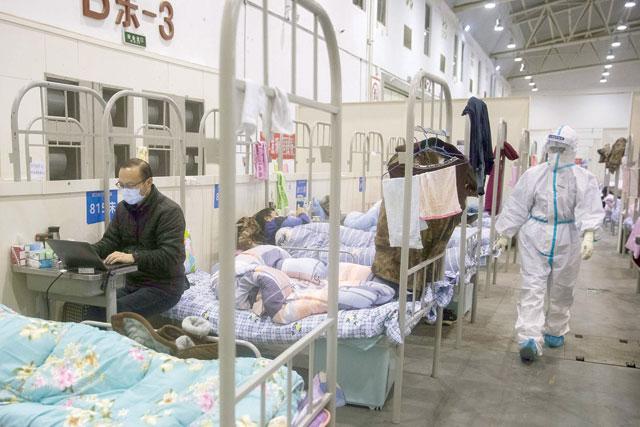You are here
WHO warns against novel coronavirus 'blanket measures'
By AFP - Feb 17,2020 - Last updated at Feb 17,2020

People wear protective face masks as they arrive at a market in Beijing on Monday (AFP photo)
GENEVA — The World Health Organisation (WHO) on Monday warned against "blanket measures" over the novel coronavirus outbreak, pointing out the epidemic outside of China was only affecting a "tiny" proportion of the population.
WHO also said that — with a mortality rate of around 2 per cent — COVID-19 was "less deadly" than other coronaviruses such as Severe Acute Respiratory Syndrome (SARS) or Middle East Respiratory Syndrome (MERS).
WHO officials rejected the suggestion that all cruises should be halted to avoid risking a new nest of infection like the one on the coronavirus-hit Diamond Princess off Japan.
“Measures should be taken proportional to the situation. Blanket measures may not help,” WHO chief Tedros Adhanom Ghebreyesus told reporters in Geneva.
“If we are going to disrupt every cruise ship in the world on the off chance that there might be some potential contact with some potential passenger then where do we stop?” said Michael Ryan, head of WHO’s health emergencies programme.
Ryan said that even at the epicentre of the crisis in the city of Wuhan in central Hubei Province, the “attack rate” — a measure of the speed of spread of the virus — was four per 100,000.
“This is a very serious outbreak and it has the potential to grow, but we need to balance that in terms of the number of people infected. Outside Hubei this epidemic is affecting a very, very tiny, tiny proportion of people,” he said.
Tedros also referred to an apparent decline in new cases of the disease in recent days but said that the trend “must be interpreted very cautiously”.
“Trends can change as new populations are affected. It is too early to tell if this reported decline will continue. Every scenario is still on the table,” he said.
Tedros said that more than 80 per cent of patients infected with the virus have mild disease and recover, while 14 per cent have severe diseases such as pneumonia.
Around 5 per cent of cases are considered critical with possible multiorgan failure, septic shock and respiratory failure and, in some cases, death,” he added.
Tedros said there were “relatively few cases” among children and more research was needed to understand why.
Related Articles
BEIJING — The death toll from the new coronavirus outbreak rose again on Tuesday but Chinese and international health officials sought to ca
BEIJING — The world has a "window of opportunity" to halt the spread of a deadly new virus, global health experts said, as the number of peo
BEIJING — The death toll from the novel coronavirus surged past 800 in mainland China on Sunday, overtaking global fatalities in the 2002-03
















